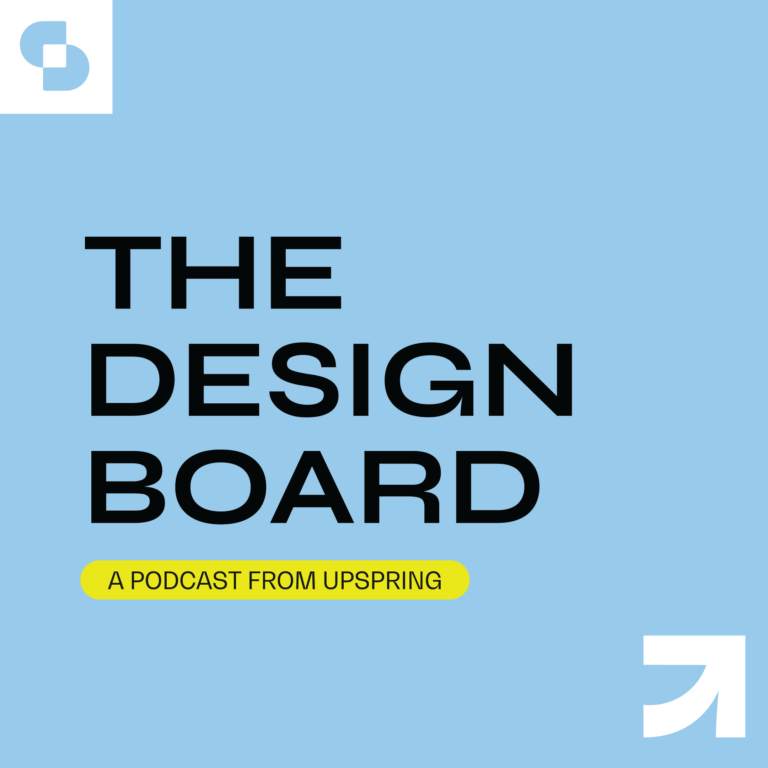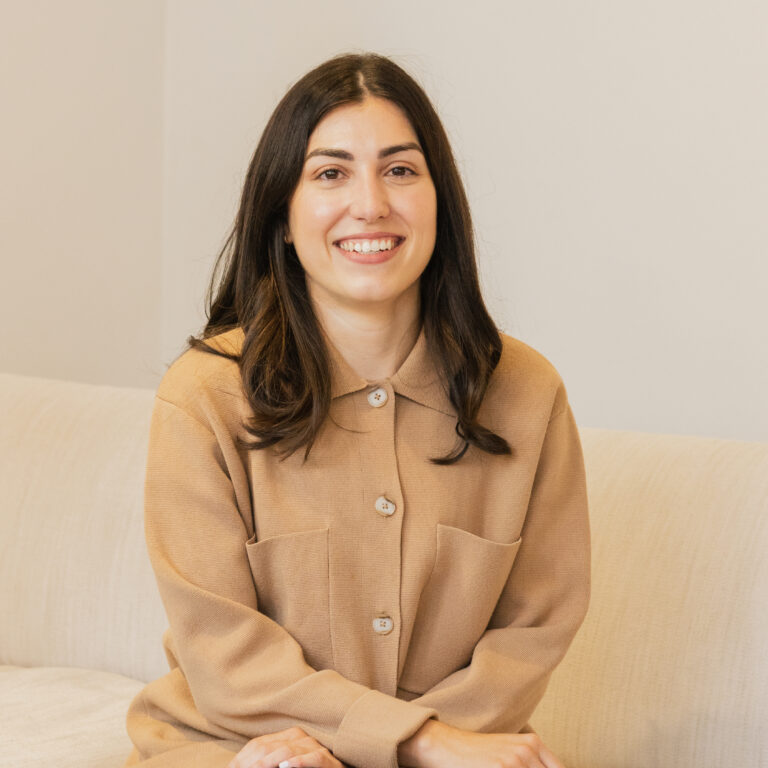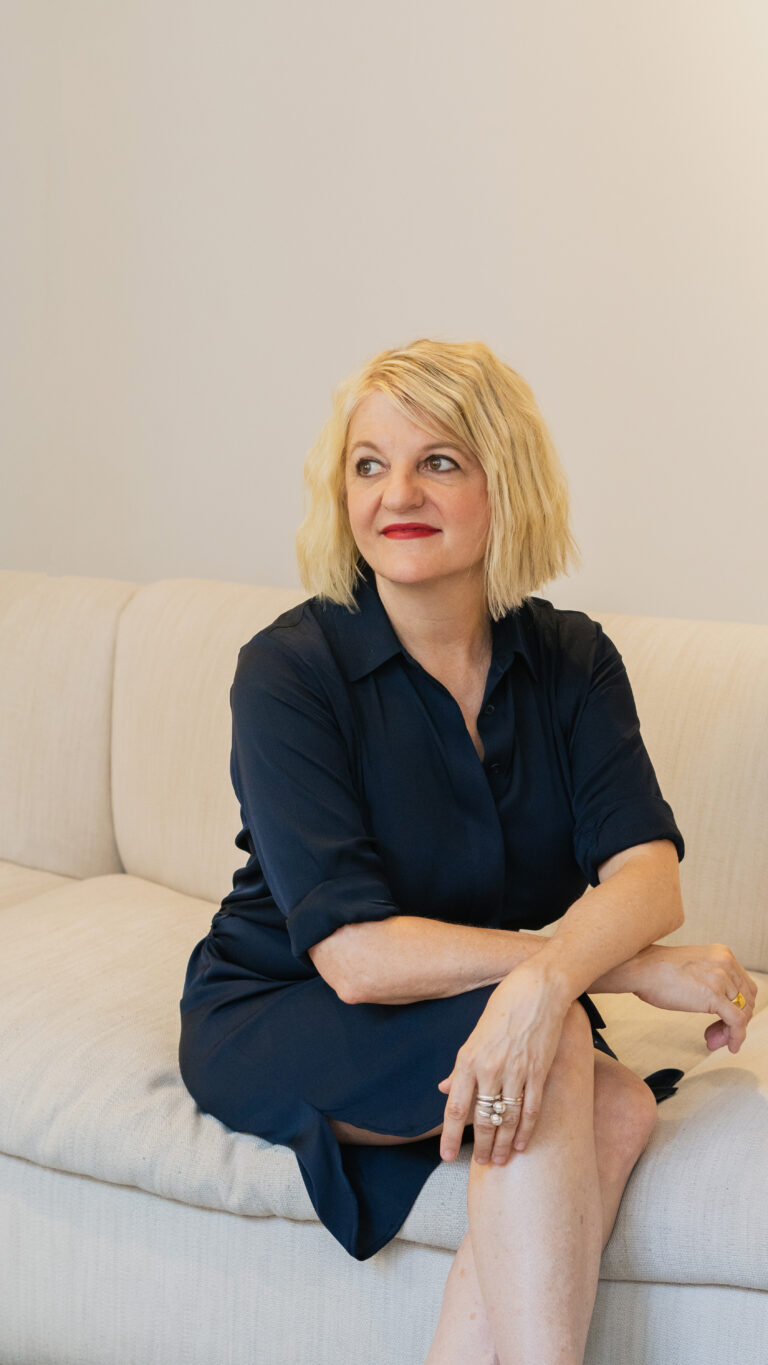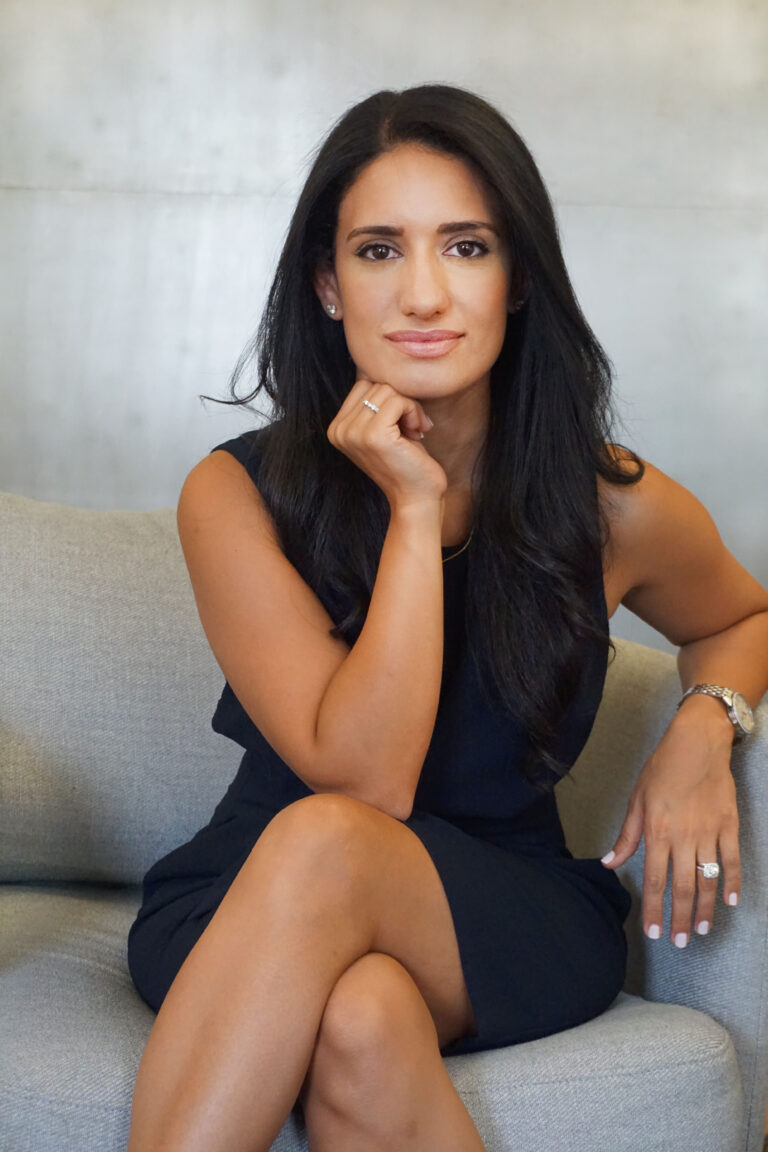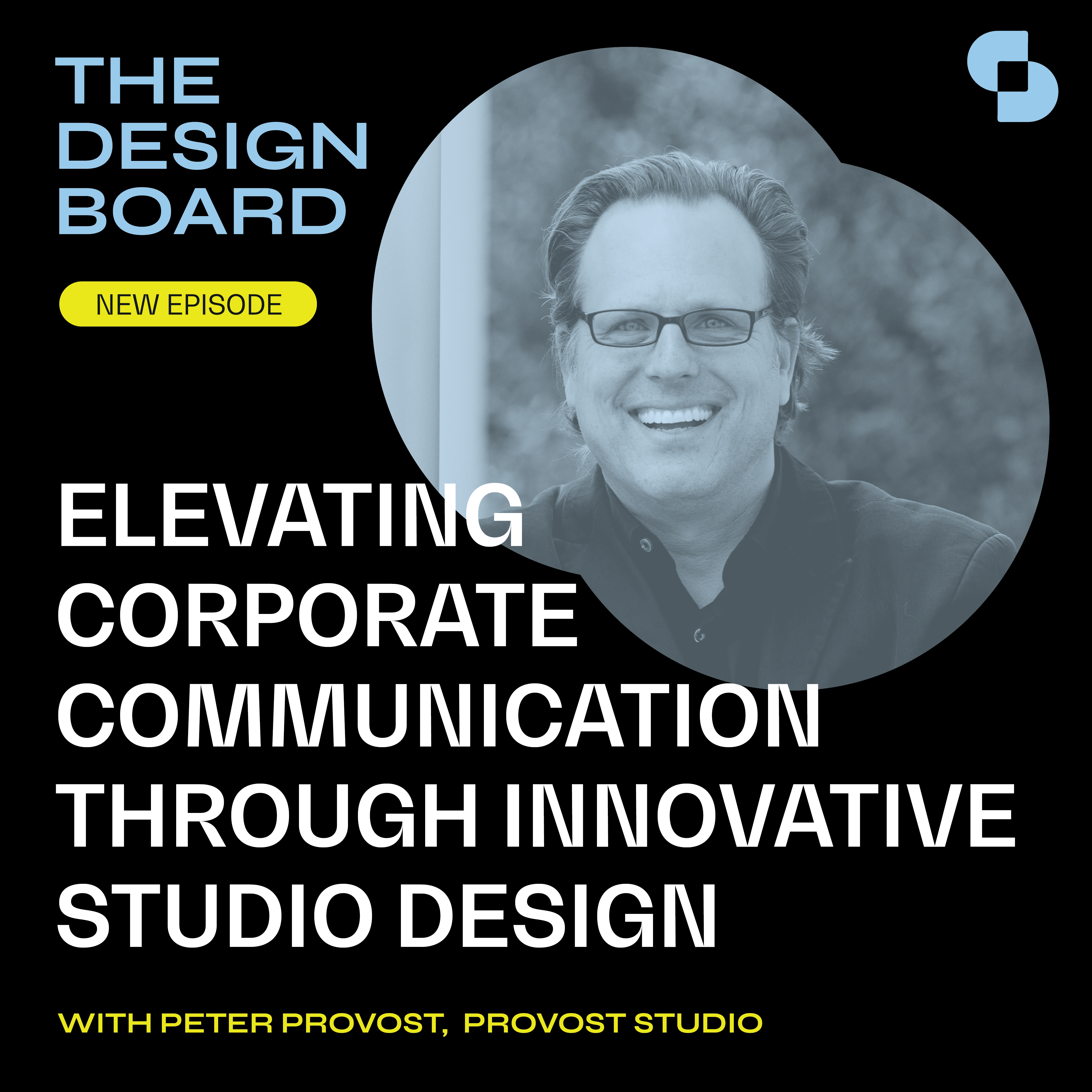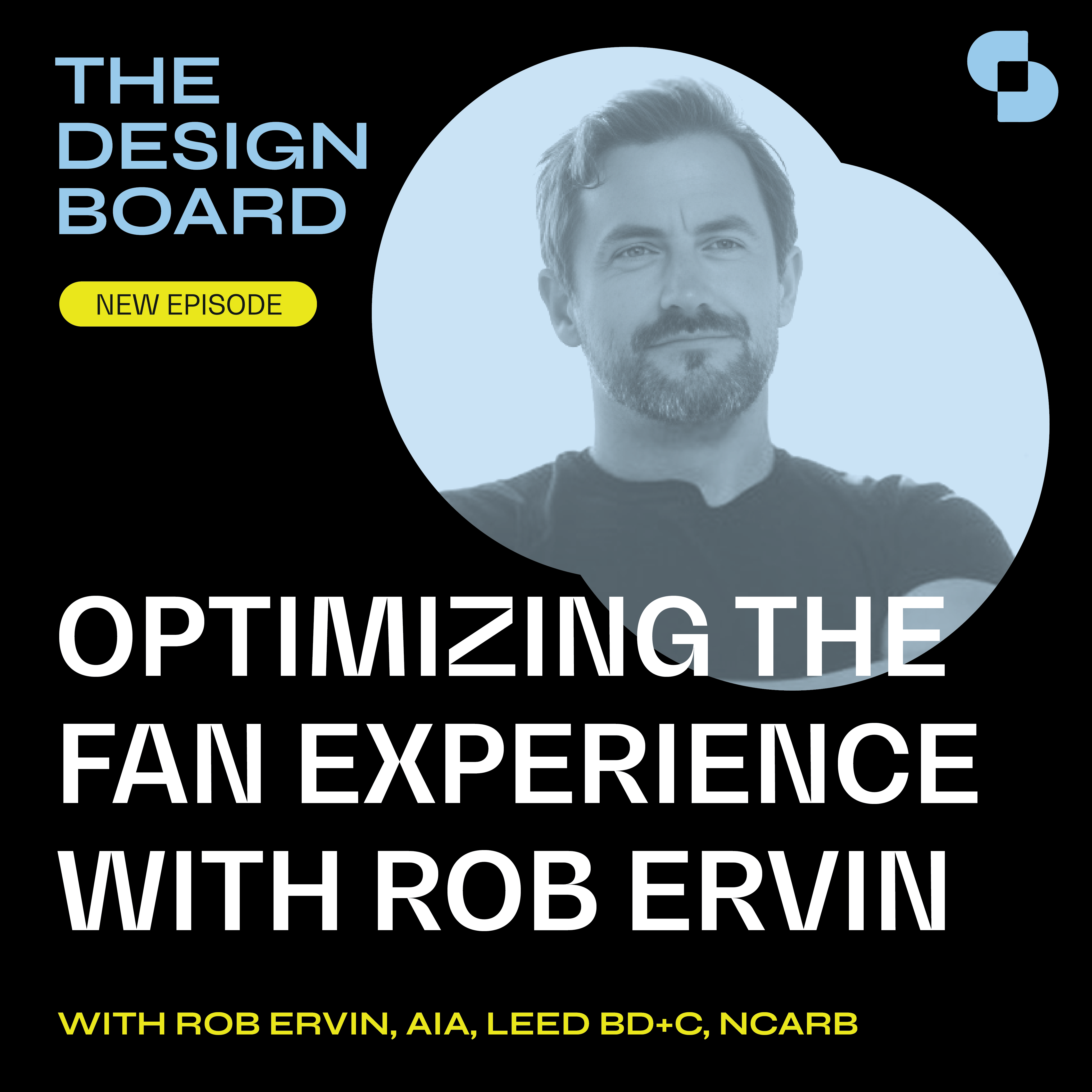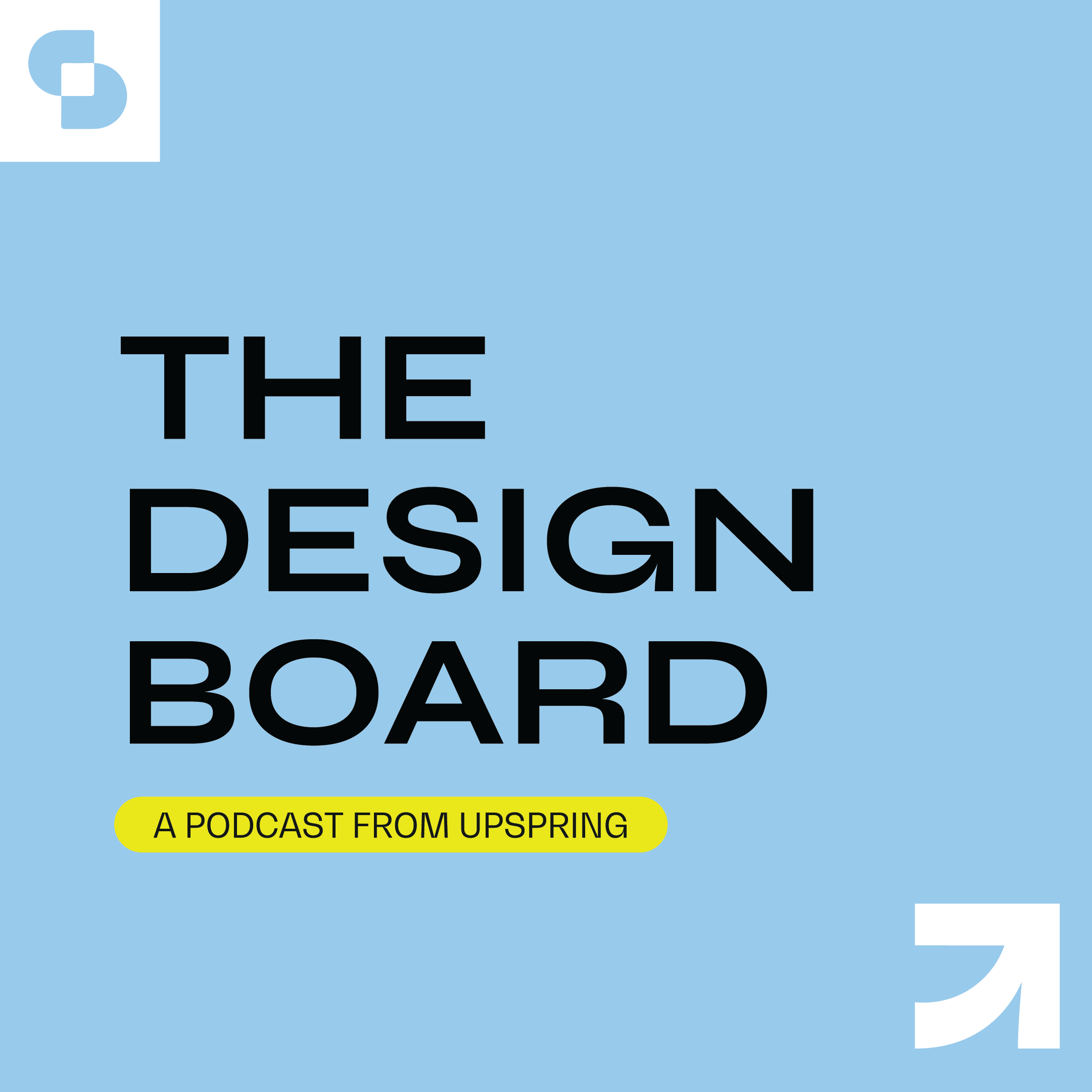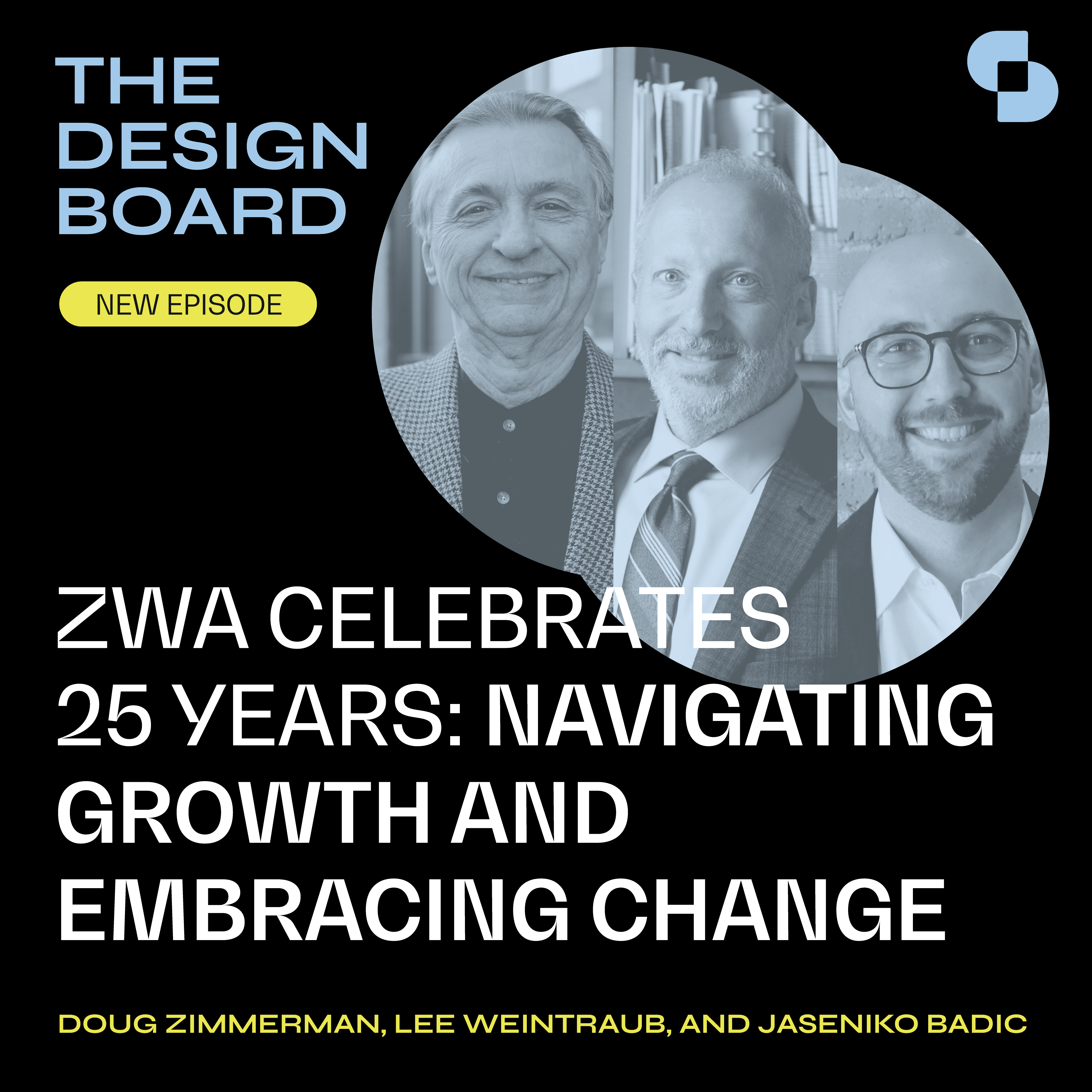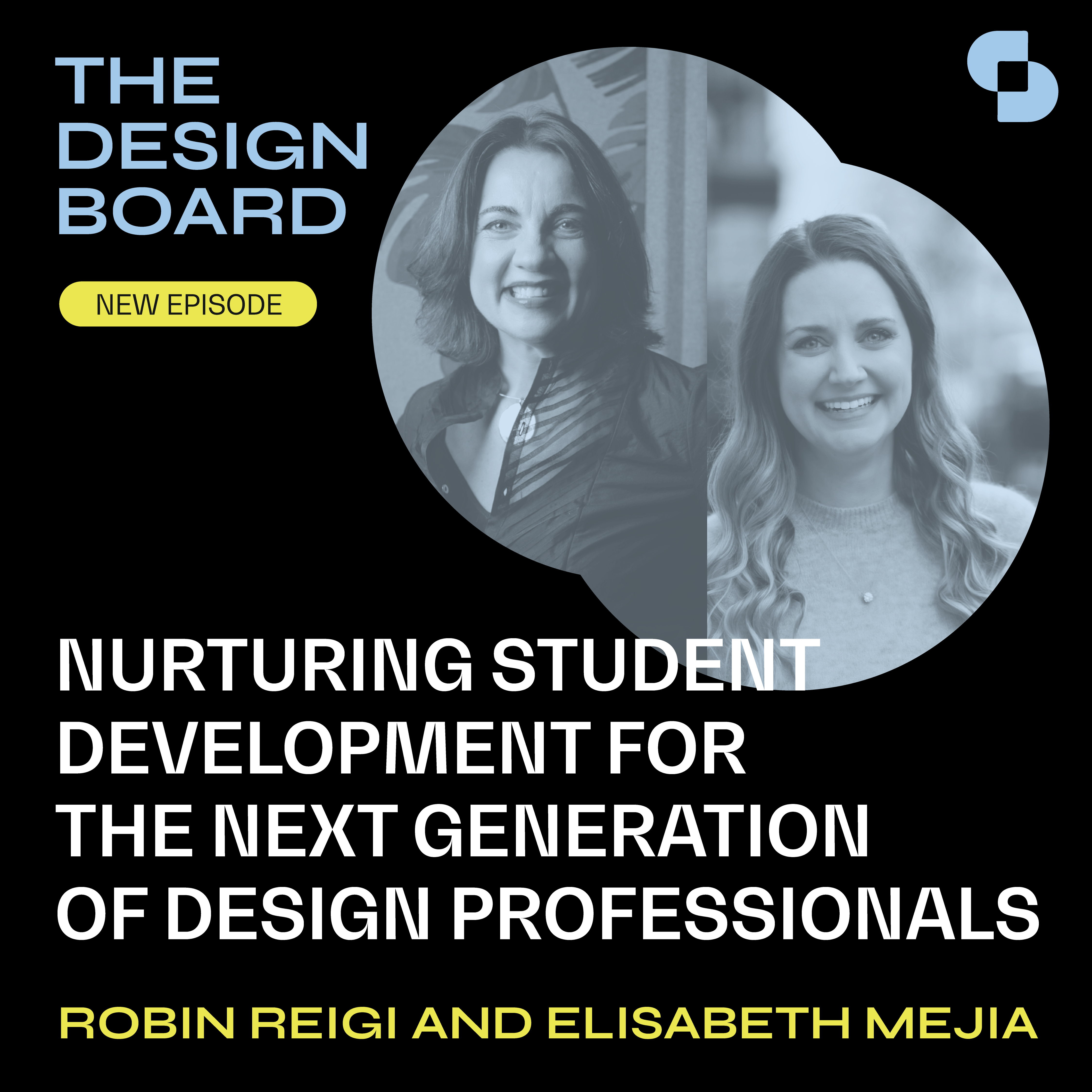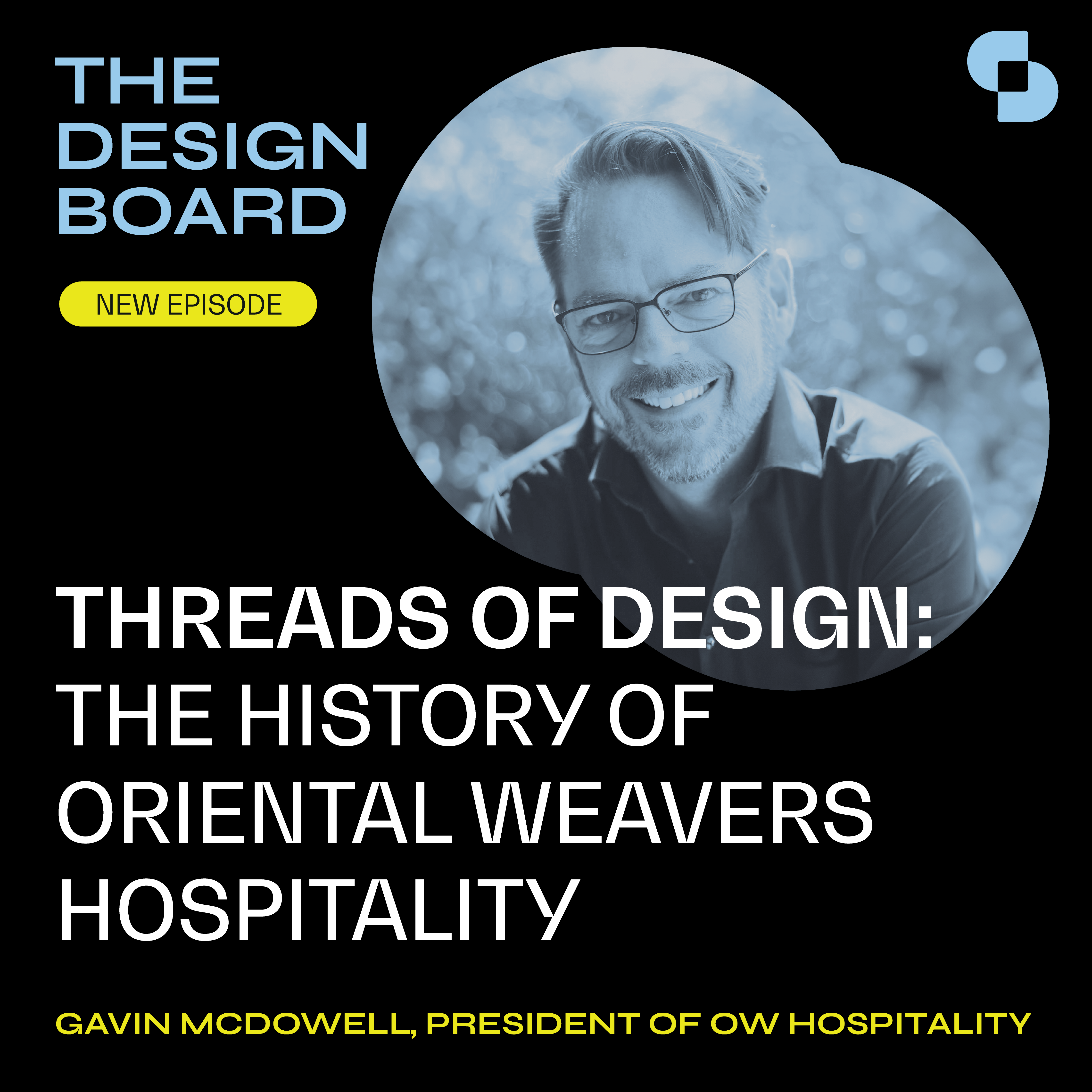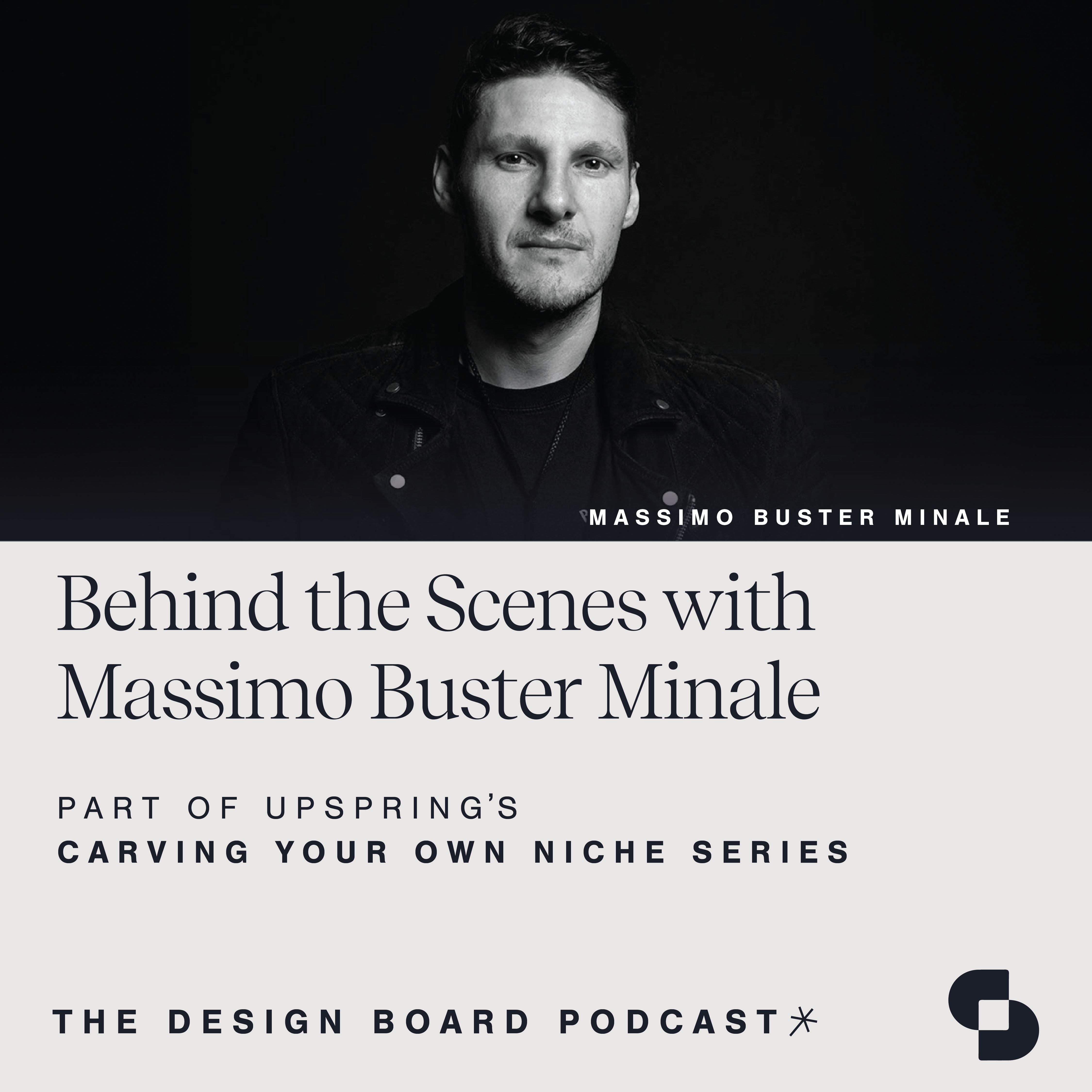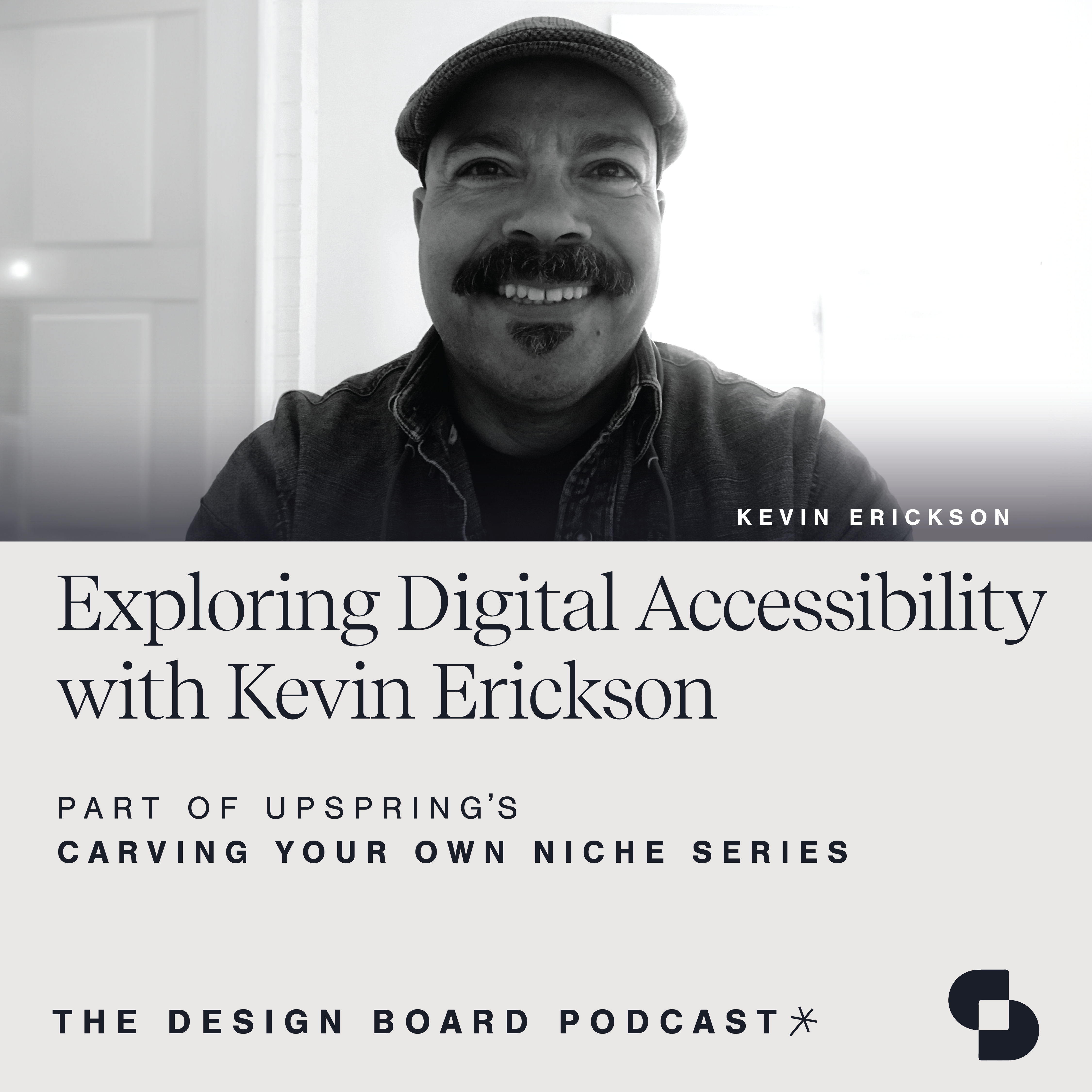Seemingly everything has gone virtual over the past several years, but are there sacred experiences that should remain physical and tangible? While advancements like the metaverse and 3D mapping may contribute to a better virtual design showroom experience, nothing can replace the much-important sense of touch. Anthony Scot from Havwoods — a global specialist in wood flooring — has given a lot of thought to creating the perfect in-person showroom experience. Join us for a discussion about the current state of the design showroom and where it’s headed in the future.
The Design Board, by UpSpring, is a proud member of SANDOW Design Group’s SURROUND Podcast Network, home to the architecture and design industry’s premier shows.
Susan Fernandez:
Welcome to The Design Board, a podcast by UpSpring that focuses on design, development and everything in between. We host innovators in our industry and explore topics that support your growth in every way. I’m your host Susan Fernandez, and I’m joined today by Anthony Scott, global product and innovation director of Havwoods, and Dayna Prepis, associate VP at UpSpring. Seemingly everything has gone virtual over the past several years, but there are sacred experiences that should remain physical and tangible. While advancements like the Metaverse and 3D mapping may contribute to a better virtual design showroom experience, nothing can replace the much important sense of touch. Since opening the first US showroom in 2017, global wood flooring specialist Havwoods has been dedicated to curating the perfect showroom experience. Anthony, thank you for joining me today. I think we can agree nothing has caused more waves in the design industry than Covid, and I’m looking forward to discussing how that has affected showrooms and what can we expect in the long term? Anthony and Dayna, welcome to the show.
Anthony Scott:
Thank you. Nice to be here.
Dayna Prepis:
Thank you, Susan.
Susan Fernandez:
So let’s talk about how this all started. Havwoods began and has a powerful presence in the UK. So what contributed to expanding the company’s footprint in the USA?
Anthony Scott:
Yeah, that’s a good question, Susan. So we’ve worked in the UK for close to 50 years in wood flooring, and our route to market is mainly with architects and designers working on specifications for all types of projects in multiple sectors. And I guess, as the world becomes a lot smaller in terms of the virtual network that exists, the designers have managed to specify projects for all over the world and it doesn’t matter where that designer exists. So we start to gain a lot of specifications from London, for example, which is where our core exists. But they will be for projects, say in the states, and then that then led us to then decide that we needed a presence over in the United States. And what better place to start than New York where a lot of the design comes from. But we could still keep it fairly tangible in terms of timeline in relation to London. So that started our foray into the United States, working with some multinational design companies, but also some global brands as well.
Susan Fernandez:
That’s really interesting that the London design teams were specifying for US projects. So what challenges did you face in growing Havwoods from an established UK brand to a successful brand in the United States, and how did you overcome these challenges?
Anthony Scott:
Yeah, so whilst we had a lot of good interest from some of these multinational companies and global brands, there was obviously a huge amount of companies and brands that didn’t know us and weren’t aware of us. So I guess one of the biggest challenges was to make sure that we got our name out there quickly and quite efficiently to the rest of the market, to make sure that what we were doing was full exposure to everyone within the design community. And thanks to a wonderful marketing team, but also an amazing product, word quickly got round that we were definite serious players within the market and we needed to be taken seriously. And the design community is quite close in terms of designers will move from one agency to another, and network and talk to each other very closely. So I think that also helped promote our name relatively quickly, but I guess brand exposure was the biggest challenge.
Susan Fernandez:
Dayna, you were previously a part of the Havwoods team, and I’m curious, from a marketing perspective, what that was like to help translate this UK brand to the states.
Dayna Prepis:
Yes, I love that question and I love that all my worlds are colliding in this conversation. So this is a dream come true for me. But I was just going to ask you along the same thread was that it’s really easy when the product speaks for itself. Because I think we all know that the US tends to follow European trends and just anything from sustainability standards to just holding the product and the experience to a higher standard. So taking that part of it was very natural and very easy, and being able to talk to a New York audience, but just an American audience in particular. So I think product-led focus was get the benefits out, get all those beautiful install shots.
And also from people still believe that a picture is worth a thousand words. So seeing a very posh flat or a very interesting hotel brand, that translates to anybody that’s seeing it. So I think going product first, but also just still being able to rely on the company’s core and the history. The experience, and I know Ant will get into this when we talk a little bit more specifically to the showroom, but having that experience in person, it’s no different anywhere you go. So it was pretty easy to have that be the real core of the launch for this brand for the five years that I was so lucky to work on it.
Susan Fernandez:
Well, that leads me to my next question, which is how did this physical location, so you chose New York, how did that really contribute to the growth and the success of the brand? I will say that when we talked to other wood flooring manufacturers, they mention you guys as the ones that they’re watching.
Anthony Scott:
Yeah, no, it’s nice to be watched, I guess, and emulated in many ways by a lot of other brands as well. I guess one of the prerequisites for the showrooms that we open around the world is that it needs to be within a design community area. So we chose specifically Chelsea within New York. We do the same in London, the same in Sydney, Melbourne, et cetera. So whilst we’re within touching distance of the design community, we also attract a lot of other people like end users and contractors to that showroom as well, because we’re operating within that area that benefits everyone to be in the same area.
So similar brands or similar specification-based manufacturers or suppliers, all within the same community, makes it a lot easier for people to specify products and go and create a mood board within a particular community or area within the city as well. So that was one of the, like I say, prerequisites of opening where we did in New York. Designers and architects are naturally time poor, so just being able to swing by on their way into the office or the way home from the office and pick up a sample is just music to their ears. And rather than having to wait for a rep to come in and not actually quite see the full sample board or something like that. We’ve always been very versatile in trying to make it as easy for the designers to specify as possible.
Susan Fernandez:
Dayna, did you have anything you wanted to add to that?
Dayna Prepis:
Yeah, I think there’s also just, we have a pretty large design following that listens to these conversations. And I think if you could walk us through some of the physical design choices that are made within the Havwoods showrooms, because to me there are very unique setup from the way that the wood floors chosen to be displayed so that you can look down on it, or if you can walk us through some of that decision making on why? What special moments are there within a Havwoods showroom that you maybe don’t get somewhere else, or especially within other wood flooring showrooms?
Anthony Scott:
Yeah, sure. So typically wood flooring showrooms tend to have the same stand as what we call the waterfall stand, which is panels as piled up behind one another. They’re always in the vertical plane rather than the horizontal plane. Floors were obviously meant in the horizontal plane, by the nature of it. So that was just a really basic thing that we thought it’s important that we display it in the correct manner. Light plays a massive part in design and particularly natural light. And if the reflection off our floor is changing the color because it’s in the vertical plane versus the horizontal plane, then that’s a big influencer to whether a designer chooses our product or not. So making sure that they see it in the form where it is going to be finally applicated is really important. That’s the point I guess Dayna was making about in the correct form.
We also have things like the temperature lighting to make sure that we can see it in different mood settings, et cetera. We bring other materials into the showroom, so as well as our own wood flooring, we collaborate with other manufacturers so that people can create mood boards within our showrooms like textiles and metal objects, tiles, marble, et cetera. We have virtual rooms within the showrooms as well, and people can go in, like say an end user could go in, choose a floor. We will guide them through the whole process of what makes it important for them or what is important for them. So construction, color, width, texture, finish, et cetera.
We guide them through that whole storyboard of where we get to an end product. But then we also have the virtual part of the showroom where they can then connect with other stakeholders within the project to then talk them through it as well. So it’s all there on hand. The designer could go in and talk to the client and vice versa. Again, it just makes us very hands-on, but also within easy touching distance of other networks and other stakeholders as well.
Dayna Prepis:
I think that’s a great point too because obviously the whole point of this conversation is that we don’t think the showroom’s really going anywhere. And there’s such a luxury but also concierge experience happening when you go into a Havwoods showroom, and I’ve been to more than one, so I could speak from firsthand experience. But the idea that you said designers are time poor, but it’s also they’re not the only ones making that decision, right? If it’s a residential project, sometimes a homeowner’s coming in. If it’s a massive hotel project, you’ve got 6, 7, 10 people from a team coming in.
The idea that you can have your larger sample board out with smaller samples on the side for all the things that you’ve already looked at, read through, predetermined. So that when you’re coming in it’s you’re ready to go. You’re seeing your options, you’re seeing what they would look like in this space. And then you’ve got the support from the sales teams and the rest of the teams at Havwoods to take them through the finish line and really push that confidence that they’re making the right decision. So I think that that’s also, from not maybe a tangible perspective from an experiential perspective, that’s so special.
Anthony Scott:
Yeah, I think it’s also worth noting that we don’t have any salespeople within our showrooms. They’re all flooring consultants now. The representatives that we have in the showrooms do not have sales targets, and that’s really important because we want it to be a real experience where we’re genuinely finding the right product for a particular client. So it’s fully consultative, there’s no selling. As soon as the client walks through the door, we ensure they’re made to feel welcome and warm, and we’re not trying to get a sale as quickly as possible.
We can guide them through that process to make sure that they have a floor that they love forever, rather than just making a sale. That’s something that’s really important to us, that we don’t go heavy on the sales element. At the end of the day, it’s such an important and often major part of the design that it’s so important to make sure it’s correct. We often say in the Havwoods showroom, the design starts with the floor up. So that sets the base and the tone for what the future design of that particular space will look like. So we do feel quite privileged that people do often start with the flooring.
Susan Fernandez:
In America we really look to Europe for that type of sophistication, and I think that is something that a lot of showrooms here could really embrace, this idea of being a consultant rather than a salesperson. So you’ve got this amazing showroom, you’re over here in the United States, and then our friend, the pandemic comes. And that had a considerable impact on how designers work and how showrooms operate. So suddenly brands and designers and homeowners were forced to settle for virtual appointments. With such a thoughtful, sophisticated approach to the showroom, how did Havwoods adapt to this?
Anthony Scott:
Yeah, it was an interesting time, and that’s for sure during the pandemic. All of a sudden I was spending a lot of time in New York, and all of a sudden site visits weren’t necessary. Client meetings weren’t necessary as long as they could have a sample, then that was fine for that moment in time. So we continued our free sample service. We would also make sample panels and regularly send them out to designers’ home addresses. We didn’t have any reservations about sending samples to non-office based clients. And a lot of designers, we would go online on a consultation with designers and they would often show us their little mini library that they’d created within their spare room in their apartment or house or whatever.
It’s quite interesting to see how all of a sudden we realized just how important material libraries and physical samples were to designers to fully understand the impact of it. So I guess every cloud has a silver lining and we managed through it by still sending physical samples, but this comes back round to actually, you can’t be seeing the sample in person, in its entirety, in a bigger and fuller space along with other materials that contribute towards the design. So yeah, I think looking at the pandemic from its most positive point of view, it made us grateful for what we’ve got in terms of a showroom.
Susan Fernandez:
So Anthony, a lot of the designers want to remain at home and they want to keep this virtual experience. I feel like what I’ve seen for most firms is this kind of hybrid. We’ve gone back to more of a hybrid work model. So what are the downsides of relying just on this virtual, and what kind of protocol has Havwoods put in place to ensure the experience is still valuable?
Anthony Scott:
So as I was saying, we’re happy to send samples and products and virtual wood books and hardwood books, which is basically our catalog of products, out to designers’ home addresses. The downside of designers working from home is that we can’t do that face-to-face consultation in person, but we can still do a face-to-face consultation over WhatsApp or Teams or Zoom. So that was one benefit and one protocol that we put in, that we started to offer the virtual showroom consultation. So we have a consultant within the showroom that can still walk the designer through the products, still get the panels out, still show them in their horizontal setting and a particular temperature of light, et cetera. And the designer would have pre-ordered the sample or we would’ve pre-sent the sample so they can look at the physical hand sample while seeing it in a bigger format within the virtual consultation.
So I guess from that side, that was the protocol that we set up to ensure it was as realistic as possible, still with a physical sample in their hand, but was talking them through the selection process of construction type and finish and care and maintenance and things like that. The big downside to it is that you don’t build up quite the same rapport with someone, over a video conference, that you do in person. You definitely don’t always do the same amount of small talk, for example, to really get to know a person. And I guess that was one of the big downsides and one of the big challenges. But those barriers are quickly broken down as people get more and more used to dealing over Zoom and Teams anyway. So I think we’re kind of past all that now. It’s become second nature to everyone to do some consultations over a virtual network, but I don’t think you can replace the face-to-face fully. I think those who choose to do the face-to-face definitely get a better experience.
Susan Fernandez:
And Dayna, you were doing the marketing then. So how were you using marketing to support these types of efforts?
Dayna Prepis:
I think that’s a great question too, and that goes back to just being smart about how can I still provide somebody an experience when they can’t physically come and have one? So obviously during that time we saw a lot of the commercial projects take pause, or maybe get pushed out a little bit, but not in the residential side. Everyone was spending how many hours a day in their home office, or their living room, or in their children’s room, and just being surrounded by the fact of, wow, the way that I designed my space, the way that I think about my space is super important. So I think there was a definite uptick in a focus on the residential side of the Havwoods business, and it was really nice to be able to give people almost an escape. Whether that’s, hey, look at this beautiful hotel project. Don’t worry everybody, we’re going to get back there one day.
So trying to keep the optimism, but also really having to take a look at what tools do we have that we can still help people? How do we talk about the finish? How do we talk about choices that you need to make? But I think all of the things that Anthony’s mentioned so far are about, again, the consultativeness, the concierge that I will do whatever I can to be helpful and help you make your job easier. And that is something that stems originally from the showroom experience, from just the European mindset in general. So it was very easy to leverage that part of the brand. So I think that it was definitely a unique time for everybody, but I think the more helpful and the more information you can provide, while not being overwhelming. Everyone’s got a lot going on, a lot of emails flying through the inbox chats. We’ve never been more digitally driven in our entire lives. So I think that balance of optimism and helpfulness really got through for the year and a half where there really was no showroom open at all.
Susan Fernandez:
That’s really interesting. You started with this very consultative showroom experience, really catered to the way that designers live and work, and then we had the pandemic interrupt all of that. So now we’re getting back to this sort of hybrid. I’m curious to know a couple things. Are you seeing the same type of traffic or has it changed? Are you seeing the same types of people come in?
Anthony Scott:
Yeah, so I guess the traffic remains similar, but I think the profile of the client coming into that showroom is definitely different. So rather than the designer or specifier coming in themselves, they’re happy to send in an end user, a client of theirs, to do the selection process. And I think it’s because of a massive amount of trust on Havwoods part as well. So we’ve built up a good amount of rapport and trust with those particular designers, where they know that we are going to give them the best consultation and offer the best advice for their projects. So I think that helped the designers get on with their day-to-day whilst we spend 1, 2, 3 hours consultation time with their particular clients. And I think it helps them as well.
Dayna Prepis:
Absolutely. And I think if you need any proof events, right, we’re finally getting back to this place where people want to go back to events and attend things and learn and see and do. And being in such a heavy design district with all these showrooms, I think Clerkenwell Design Week is probably the proof in the pudding for you guys of just seeing, what was it before Covid? A thousand people coming through or something like that. And then this past year seeing those numbers again, and the people just wanting to get in and touch and talk to you guys.
Anthony Scott:
Yeah, absolutely. I think we get 2000 people in now over three days, and mainly all designers, architect, specifiers, and also from all over the world they come to Clerkenwell Design Week. We have the benefit of a really good location in London, right in the hub of Clerkenwell, which is the design community there. I think it’s on a lot of people’s hit lists that they might be a New York designer or even an LA designer, and they come to London for the weekend and off the week. And happy to make Havwoods top of their booking list quite often. And come in and really refreshing that it’s a similar experience to what they’re getting back in the States.
Dayna Prepis:
And I think there’s so many anecdotal stories like that. There’s people from Australia who might be working on a project in New York and just happen to be in London for the weekend. I think we all know that the design community is a very global community at this point. But to be able to see the exact floor that you are putting in a space literally across the world, and have the exact experience you have. Let me look at your notes real quick. It’s all there for you no matter where you are. So I think between the travel component and the events component, that urge to get back in person is finally feeling normal for everyone.
Susan Fernandez:
So we’ve talked about the showroom and we’ve talked about the way that you’ve had to adapt from the pandemic and then what has been next after that. But I want to talk about the products because really, at the end of the day, the products are your bread and butter. And they’re incredibly beautiful and innovative. So can you just walk us through how this process of innovation and how you bring products to market has evolved?
Anthony Scott:
Yeah, that’s good. So my role used to be North American managing director, but my true passion has always been for the product and for wood product in particular. So it was around about 12 months ago I decided to shift across to head of the product development team. Prior to me heading up the team, it was largely done by our business owner and I guess a smaller team, including myself and a few other people within the business. And there was no real set process in place for product development or innovation. When an opportunity came, we would normally take that opportunity. A lot of our inspiration comes from designers wanting a particular product. 30% of our products that we end up selling are custom or bespoke products, and then we will take some of those and develop them into a mainstream product quite often.
So that was the process prior. And then recently we’ve created a true and dedicated product development and innovation team, where literally we are spending seven days a week, 24 hours a day or more sometimes, just absolutely searching for the next big thing. Analyzing trends, looking at new materials to bring in, new ways of installation, or new technology in terms of construction, acoustics. All sorts of areas of design that you wouldn’t normally associate just purely with wood flooring. And at that point we decided to diversify into other wood products. So Havwoods doesn’t want to be just known as the wood flooring solution provider, we want to be known as, if you need wood for any element of the interior, that Havwoods is the place to come to.
So we’ve just recently launched our pure panel for cabinet making, wall paneling, et cetera. Our Elegante veneers for really giving cabinetry and walls that extra pop that is so nice in design spaces at the minute. We’ll be launching some new products in the new year. We’re going into acoustics in a big way next year and there’ll be wood-based acoustic products. So yeah, there’s plenty in the pipeline and we couldn’t have done that without a dedicated product development and innovation team.
Dayna Prepis:
And I think that this is probably a good little 30 seconds for you to take a trip down memory lane and explain where you started with Havwoods, because I think that’s such a special and important part of you and your position, but also where the product is going to, because you’ve been so deeply ingrained in it for such a long time.
Anthony Scott:
Yeah, no, thanks Dayna. So I started in Havwoods 24 years ago and literally started in the warehouse, picking and packing orders. I remember looking at two pieces of Scotia beading for around the edge of a room, and one was oak and one was beech, and thinking, how the heck do you ever tell the difference between these two? I’m never going to learn and things like that. And then nowadays it’s put a species of wood in front of me and nine times out of 10 I’ll definitely be able to identify it straight away, or it might just take me a few minutes to get that. And I’ve worked my way through various departments within Havwoods, in terms of operations, obviously the warehousing to begin with, then operations supply chain, into sales and brand management. I skipped the finance bit. That doesn’t really interest me. And then moved back into the product development side of things. So I’ve come full circle and it’s really interesting to see different areas of the business and be part of the growth of Havwoods over the years.
Dayna Prepis:
I think it gives you the most keen eye for all of that new and exciting and sustainable and different. Because it’s not just, oh, this is a trend. Nope, I know this inside and out, upside and down, and I think it shows in the product.
Anthony Scott:
Yeah, thanks.
Dayna Prepis:
Speaking of products, we have one very special one that we need to talk about.
Susan Fernandez:
Absolutely. I was going to say that it’s interesting that wood products are now, that you would be evolving those to also be acoustic products, since I believe that quiet is kind of the new luxury. But you’ve got an incredible product that you are launching called the Bog Oak product. Can you walk us through what this is and what makes it so special, and why is it only available in the Manhattan showroom?
Anthony Scott:
So Bog Oak is, in its very nature, it is oak that has been drawn out of a peat bog or a swamp where it’s been preserved for many, many years. So when I say many years, you’re talking a minimum of say 2000 years, but up to a maximum of around about 10,000 years. So the way that Bog Oak was formed during the ice age or the ice ages, glaciers would rip through… Most of our Bog Oak is from Central Europe, so Poland and Croatia, et cetera. So the glaciers would rip through the central belt of Europe and it would destroy huge forests in its way. They would then be preserved within the ice, or fall through the ice into underground rivers and eventually settle in peat bogs, lakes, et cetera, et cetera. Now, because air couldn’t get to these logs, they became semi fossilized, taking in all the nutrients around them and turning them this really deep, rich, black, charcoal, carbon, graphite color that just can’t be replicated with stain.
It’s a color that goes all the way through the timber itself, and it’s just a really intense, luxurious color. Nature has a great way of making something not only exclusive but extremely desirable and aesthetically amazing at the same time. So take Carrera Marble for example, where it’s quite rare and limited, but it’s probably one of the nicest marbles. There’s a reason why Michelangelo chose Carrera Marble to produce the statue of David, for example. It’s got a true beauty to it and you do pay for that privilege. Same with Bog Oak. It’s an ultra rare product. It’s pound for pound rarer than diamonds, so there’s more diamonds on the earth than there is Bog Oak. And it would be a shame to leave it in the ground untouched and undiscovered, just to eventually rot away. So we extract the logs from the ground and we only extract the logs when they’re ready to be used. Because as soon as you pull them out of the ground, they start to decompose and break up in the air relatively quickly.
So we have a unique process. There’s only two companies in the world that can do this process where we treat it with a mixture of pressure, heat, and moisture treatment to make sure that we stabilize the timber, stop it cracking, et cetera, and then put it onto an engineered board that then becomes fully stable and usable for wood flooring. And you’ll mainly notice Bog Oak is available in smaller items like small trinkets, maybe a pipe or a pen or something like that. And that’s because Bog Oak does break down. So anyone who extracts it from the ground, if they’ve not got this process in place, this proprietary drying process, they will fail.
So it’s important to have that in place. And that’s what makes it extra special that this process is not actually particularly easy to do either. And then yeah, we created these amazing wide and long length boards out of the Bog Oak and it’s just an incredible product to want everyone to make sure that they check it out because it is immense. We actually just worked with a ultra luxury car brand to put Bog Oak in their showroom. So we’re there on that same level in terms of exclusivity, luxury, feel, et cetera.
Dayna Prepis:
I think that’s also a great point too about the exclusiveness, but when you head to a showroom, you are getting something else other than just what you came for. There’s always a teaser or something that you’re not going to see on the website yet, or not going to see in the catalog yet because, if you come in, you get that firsthand experience of what really is new, what’s exciting right now. And I think vice versa too, or Havwoods is looking for the feedback. They want to hear from designers about something they haven’t seen or that they’ve been dying to just find. I need a new solution, I need something more exciting, and I need it now. So if that’s not a reason enough known that a diver is going into a swamp to handpick your rarer than diamonds floor, then I don’t know what is to visit a Havwoods showroom. So I think that’s a great point that you’ve made.
Anthony Scott:
I think the investment in time to take the time out to go and look at it, is make sure that the people that are choosing Bog Oak understand the rarity and complexity of getting to that particular stage. So it’s worth their investment to go to the showroom to really experience it in its full. Because if I just handed you a piece, you’d say, yeah, that’s a nice piece of timber and I really love it, but you really also need to understand the story and everything behind it to really appreciate it. And you don’t get that by just handing someone a small sample. It needs to be in the showroom with the consultant there.
Dayna Prepis:
And I think there’s something to be said for scale as well. I know that a lot of the product and some of the new product offering you talked about was this ultra wide, ultra long, and we’re not just talking about 10 feet here. We’re talking about 20 feet, 13 feet, really impressive, impressive things. So I think seeing is believing when it comes to Havwoods.
Susan Fernandez:
This product has an ancient innovative quality to it. So it took thousands of years, hundreds of thousands of years to make this product and to bring it to showrooms today. Really interesting. I love that it speaks to this heritage of innovation, whether you’re finding it through the innovation, they’re really taking place in the way that you cure it and make it available and stabilize it, but also bringing it to the market and seeing this potential. So is there anything we haven’t covered? And I also was just kind of curious, I don’t know if you want to talk about, but have you ever gone and picked out one of these bog oak pieces?
Anthony Scott:
Yeah, absolutely. So I’ve never actually done the diving for them myself. It is quite a specialist skill. You can’t just go and do it. These guys are trained and paid quite a lot of money for their specialism to go and do this. We also use sonar technology to find where the bogs are located because we can’t just go dig in, put loads of land in the Score Valley to pick them. So we use sonar to identify where they are. So at any one moment in time, we do know where some of these logs are, but have been there for an extraction. And then obviously I’ve seen the stabilizing process multiple times. But it’s a really interesting process and I guess that’s also part of the Havwoods experience, that if it’s not just a showroom, we can actually take the client to the mill to show them this process.
It’s not necessarily a secret. There are secret elements to it. It’s quite specialist, but we’re happy to also invest the time in taking clients to show them as much of the process as possible. With our client that we’ve just supplied for the car showrooms, we are keeping them in touch with how their order is progressing. We’re showing them pictures of the extraction of the actual log. We show them the processing, the cutting of the log and how we’re doing it. So it’s a little bit like when you get a new puppy and you see it at birth and then through its stages of until you actually inherit the puppy, and you feel like you’ve been there since birth, really. And I guess that’s the same for the flooring product.
Susan Fernandez:
And the story that comes with it really is just as fantastic as the product itself. Very cool. Dayna, is there anything that you wanted to ask that I haven’t asked?
Dayna Prepis:
Just what’s next? Give us a little under the hood, a little sneak peek. What’s the product you’re most excited about coming next year, and what should people come by in January and see?
Anthony Scott:
So Elegante veneers are getting launched in New York or in the US in January. So there are fluted panels, flexible panels, so that’s definitely something that you need to come and see. And then later on in the year we’ll be launching our previously mentioned the acoustic products as well. So our acoustic products are traditionally, or have been quite often quite plastic looking, or by their nature, fairly bland. All we want to do is create a set of acoustic products that are really, really design-led. But then also, performance-wise, right up there with the best of acoustic products.
Susan Fernandez:
Very good. Well, we are looking forward to it. Thank you so much for your time today, Anthony. This has been fascinating. Dayna, thanks for pitching in and joining us.
Dayna Prepis:
Of course.
Anthony Scott:
Thank you.
Speaker 1:
Thank you so much for listening in with us today. We hope you leave inspired by the ideas in today’s episode. For more, follow UpSpring on LinkedIn and Instagram. And don’t forget to check out the amazing lineup of shows brought to you by the Surround Podcast Network at surroundpodcast.com.

